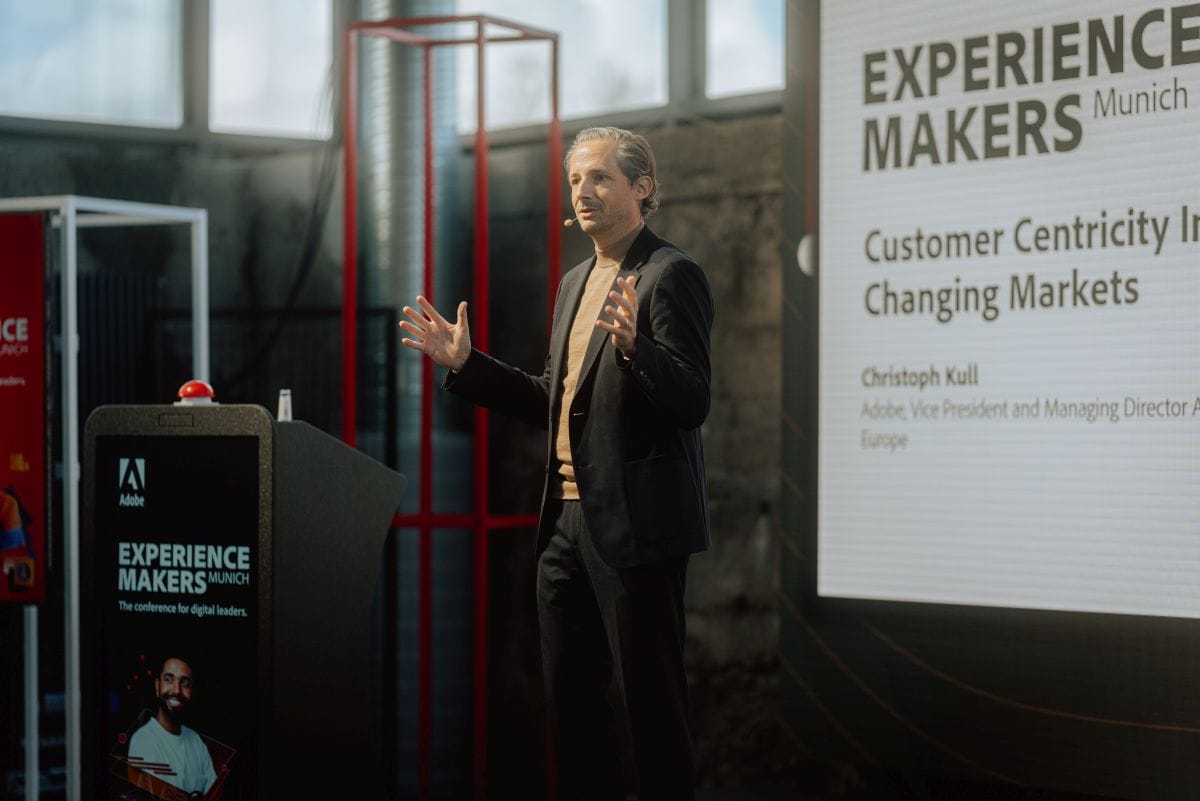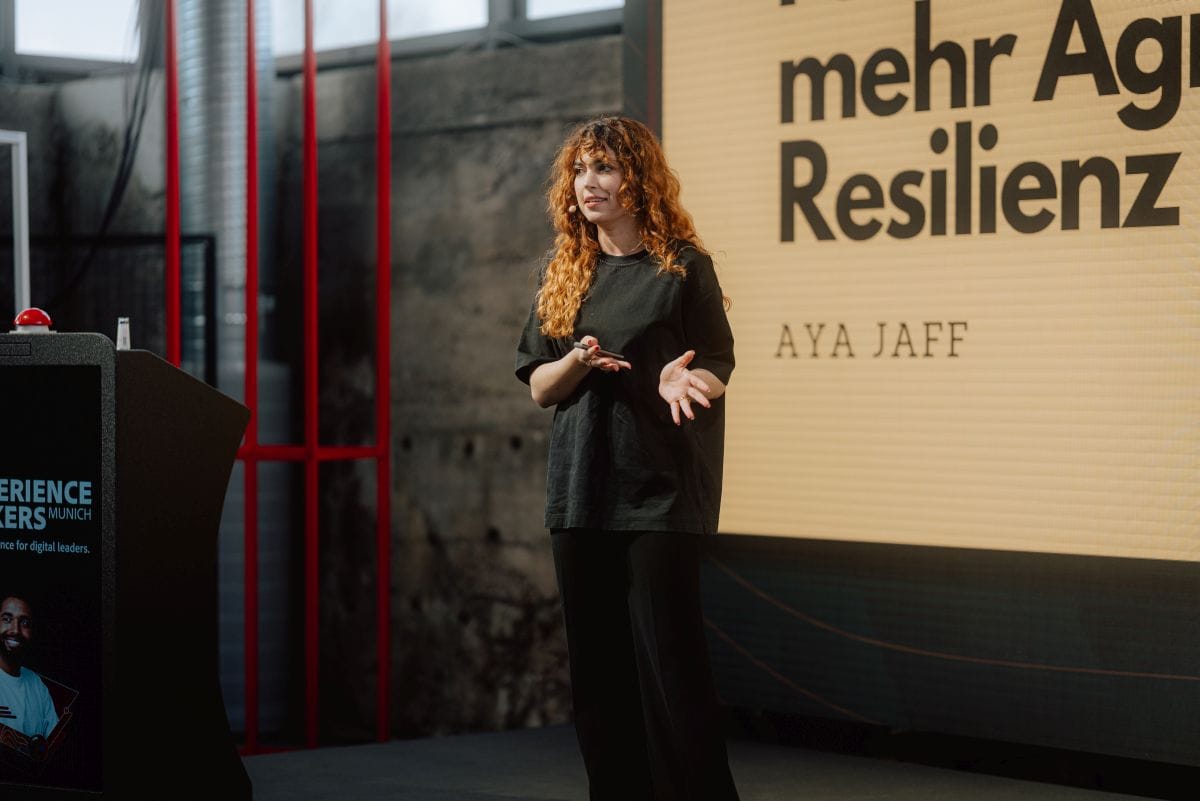"Adobe Experience Makers 2022: Welcome to the Intermediate Age
At Experience Makers 2022 in Munich, Adobe heralded the age of ultimate hybridization in CX management. Digital, analog, anything in between: The main thing is that customers are "picked up" authentically, personally (and in real time!).

It could have been so simple: The pandemic is slowly giving way to normality, but the degree of maximum digitization (predicted by many futurists) remains, at least when it comes to people's shopping behavior. They may leave their homes, which have been turned into cozy cocoons, to play sports or meet friends, but shopping is done almost exclusively online - and the individual "customer journey" can be measured and influenced at any time and in every detail.
The subjunctive at the beginning of this text shows that this is not how things turned out in the end. The dream of many marketing and customer experience managers (albeit through tragic circumstances) of finally being able to enter the age of the "transparent customer" has not yet been fulfilled. Instead, an in-between era has begun - an era that could be called "maximum hybridization" in CX management. And in all other, somewhat less buzzword-affine professional fields, perhaps also as "quite a mess".
Finally live again, and then right into the thick of things
At the beginning of November, Adobe dedicated one of the first major live events after the pandemic-related event break to this interim period in CX management. The "Experience Makers 2022" in Munich highlighted various facets of the modern design of customer journeys. And they showed - on balance - that even absolute tech professionals and marketing experts sometimes have trouble adjusting to the new circumstances.
Because customers have become even more unpredictable than they were two or three years ago. They are taking advantage of the digital boost during the pandemic, experimenting with metaverse technology and buying products directly from their favorite brands' Instagram feeds. But then they also "disappear" from the scene (or that part of it that companies can observe) and spontaneously purchase a jacket or pair of shoes they've been looking at online for months while strolling downtown. No brand can - or wants to - actively "prevent" the latter, but at least a better link between the analog and digital worlds would be useful. Can MarTech like that from Adobe help here?
Fundamental problems remain, but...
First of all: "Black boxes" of measurability - and thus of re-targeting and personalized advertising - will exist as long as there are physical stores where people can shop relatively anonymously. The Bluetooth beacons with cell phone addressing that were experimented with a few years ago did not prevent this any more than loyalty cards or coupon apps can prevent it now.

But wherever companies can see, identify, and address (potential) customers, new technology may help them do so better than ever before. This was also the position of Christoph Kull, Vice President and Managing Director Central Europe of Adobe: "Personal address, in real time and in the right context - that is now the gold standard, across all industries," Kull announced in his keynote. In a study with more than 6,000 participants, Adobe identified that today's customers no longer want to be perceived as part of a "target group" or a demographic intersection, but as individuals with complex interests, in other words: as real individuals. Conveying this feeling - scaled to hundreds of thousands or millions of customers - is a challenge. the challenge for companies in 2022 and beyond.
Don't panic
Fitting - and very sympathetic - were the remarks of Aya Jaff, best-selling author, entrepreneur and part of Forbes' prestigious "30 under 30" list. "Don't panic," Jaff called out to attendees, "because your competition is facing the same challenges you are right now." All companies are trying to cope with the challenges of the present - and the demands of customers are not that exorbitantly high: "My generation, for example, just wants to be told what is happening with our data and to be treated as the people we are," Jaff said. At the end, her open question: "That should be possible, shouldn't it?

Metaverse: "Learning by doing
What is possible, what is becoming possible - and the gap between aspiration and reality - were also the focus of Dr. Teo Pham's keynote. There's a relatively good chance that you've already seen the "expert for social media, e-commerce and the metaverse" in your LinkedIn feed; because Pham is - in addition to the aforementioned competencies - also a pro at self-branding. However, this did not detract from the quality of his talk; on the contrary, it came through again when looking at various Metaverse technologies, the ultimate hybridization. For example, when Rimowa launches a suitcase collection that is purchased as NFT and then delivered home as physical luggage. Or when Tiffany's turns jewels into NFTs, and vice versa, and buyers and their avatars can wear the same jewelry in several worlds. Sounds like science fiction and dreams of the future? But it is already part of everyday life. Perhaps not for the SMEs, dozens of which were represented at "Experience Makers 2022," but Teo Pham had a piece of advice for them, too: "Don't wait and see, try and learn.

Customer cases: Douglas and FC Bayern Munich
Finally: the customer cases obligatory for such an event, presented here by Douglas VP Global Data Thomas Wrobel and Stefan Mennerich, Director Media and Communications at FC Bayern München. Both spoke about their experiences (and the sometimes unexpected challenges) in addressing a clientele that jumps back and forth between the digital and analog worlds so effortlessly that companies sometimes find it hard to follow. Nevertheless, there was agreement between beauty and ball sports: We are not perfect, but we are getting better. Thanks also to MarTech - and despite the challenges posed by the present. A conciliatory finale.








